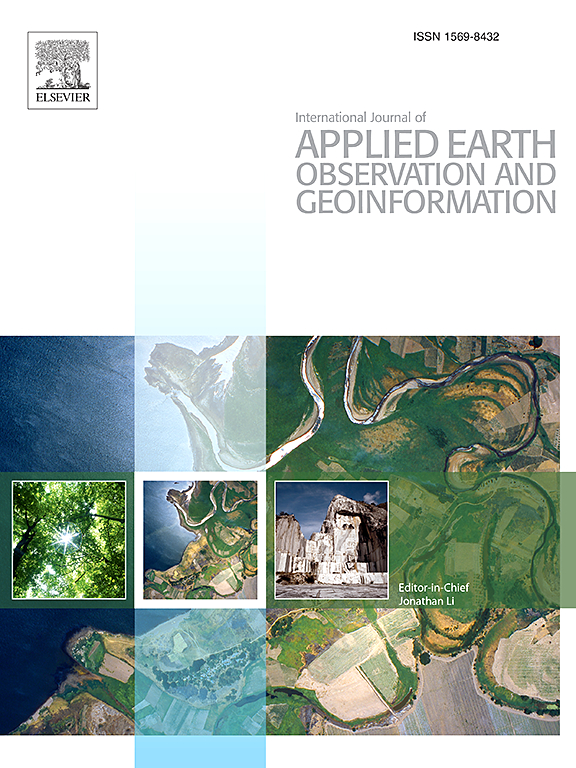Assessment and validation of Meteosat SEVIRI fire radiative power (FRP) retrievals over Kruger National Park
IF 7.6
Q1 REMOTE SENSING
International journal of applied earth observation and geoinformation : ITC journal
Pub Date : 2025-02-01
DOI:10.1016/j.jag.2025.104375
引用次数: 0
Abstract
Satellite burned area, active fire and fire radiative power (FRP), are key to quantifying fire activity and are one of 54 essential climate variables (ECV) and it is important to validate these data to ensure their consistency. This study investigates some of the factors that influence FRP retrieval and uses Meteosat Spinning Enhanced Visible and InfraRed Imager (SEVIRI) data to do so. Analysis of the influence of a fire’s location within a SEVIRI pixel on FRP was carried out using fire simulations which indicate that FRP varies by up to 14 % at nadir for a single sensor and by up to 55 % when intercomparing simulated FRP from different SEVIRI sensors. Intercomparison between actual MET-11 and MET-08 FRP data on a per-pixel basis reveals a high degree of scatter (81.9 MW), strong correlation (R = 0.72), low bias (∼1 MW) and an average percentage difference of 15.7 %. Variability is reduced when aggregated to fire ‘clusters’ which improves the correlation (R = 0.96) and reduces the average percentage difference (4.2 %). Validation of MET-08 and MET-11 FRP retrievals using FRP from helicopter mounted longwave infrared (LWIR) and midwave infrared (MWIR) thermal cameras is carried out over five prescribed burns. The results reveal good agreement between the SEVIRI and thermal camera FRP although the SEVIRI FRP is typically overestimated compared to that from the LWIR camera. This study illustrates some of the challenges validating satellite FRP which should be accounted for when defining uncertainty thresholds for product requirements and in developing FRP validation protocols.
求助全文
约1分钟内获得全文
求助全文
来源期刊

International journal of applied earth observation and geoinformation : ITC journal
Global and Planetary Change, Management, Monitoring, Policy and Law, Earth-Surface Processes, Computers in Earth Sciences
CiteScore
12.00
自引率
0.00%
发文量
0
审稿时长
77 days
期刊介绍:
The International Journal of Applied Earth Observation and Geoinformation publishes original papers that utilize earth observation data for natural resource and environmental inventory and management. These data primarily originate from remote sensing platforms, including satellites and aircraft, supplemented by surface and subsurface measurements. Addressing natural resources such as forests, agricultural land, soils, and water, as well as environmental concerns like biodiversity, land degradation, and hazards, the journal explores conceptual and data-driven approaches. It covers geoinformation themes like capturing, databasing, visualization, interpretation, data quality, and spatial uncertainty.
 求助内容:
求助内容: 应助结果提醒方式:
应助结果提醒方式:


